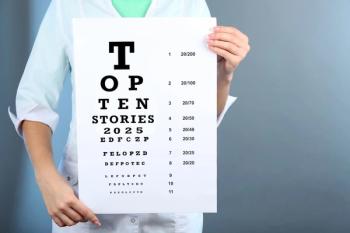
Ophthalmologist sentenced to prison for performing surgeries after license was suspended
According to court records, Paul Wade Wyatt continued to perform ophthalmic procedures in Utah after his license had been suspended in October 2016.
A Utah ophthalmologist will be spending some time in prison for performing surgeries after his license was suspended.
The botched surgeries left several patients suffering from pain and blurry vision and in one case a patient allegedly was left blind in his right eye.
According to court documents, Paul Wade Wyatt, 55, of Salt Lake City, continued to perform ophthalmic procedures in the state after his license had been suspended in October 2016, and several people suffered eye issues.
Wyatt pleaded guilty to two counts of third-degree unlawful/professional conduct and two counts of third-degree aggravated assault committed with force on Jan. 10. Ten other of his charges were dismissed without prejudice.
Wyatt is set to serve up to five years in the Utah State Prison for each of the charges he pleaded guilty to. All four sentences are set to run concurrently.
Court documents indicated several additional charges in two cases, one stemming from September 2020 and another from November 2022, were dismissed. He also agreed to pay restitution as part of the agreement.
In a news release, Assistant Attorney General Langdon Fisher pointed out there were a number of issues with the procedures that Wyatt was performing, which he did for cash payments and typically for low-income patients.
Fisher pointed out to KSL.com that several licensed physicians reviewed a sampling of cases and found that three cataract surgery patients still had lens fragments in their eyes, a rare occurrence. They also found that samples were never sent out for lab work, something that is a standard practice in ophthalmology.
According to the report, Wyatt continued to perform the procedures illegally even as issues arose and did not stop until outside intervention put a halt to his work.
According to court documents, Wyatt performed surgeries on seven patients throughout 2018 even though his license to practice ophthalmology has been suspended since October 2016. All of the injuries the victims sustained were a result of Wyatt cutting their eyes with a scalpel.
According to KSL.com, Wyatt wanted to help his patients, although some poor decisions were made, according to defense attorney Sarah Kuhn, who was trying to make a case for probation, which would allow him to be able to make restitution.
However, Third District Judge Kristine Johnson rejected that proposal, which would not provide justice for the damage inflicted by Wyatt. Johnson also rejected a prosecution call for consecutive sentences, which she said would be excessive when compared to guidelines set forth in the case at the onset.
A hearing to address restitution is set for May 3.
Newsletter
Don’t miss out—get Ophthalmology Times updates on the latest clinical advancements and expert interviews, straight to your inbox.





